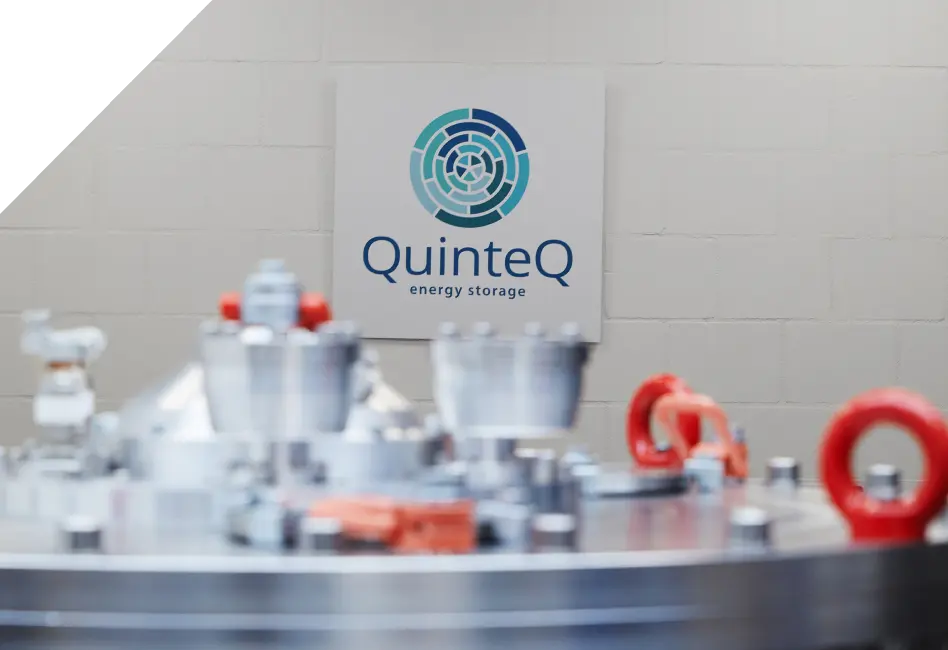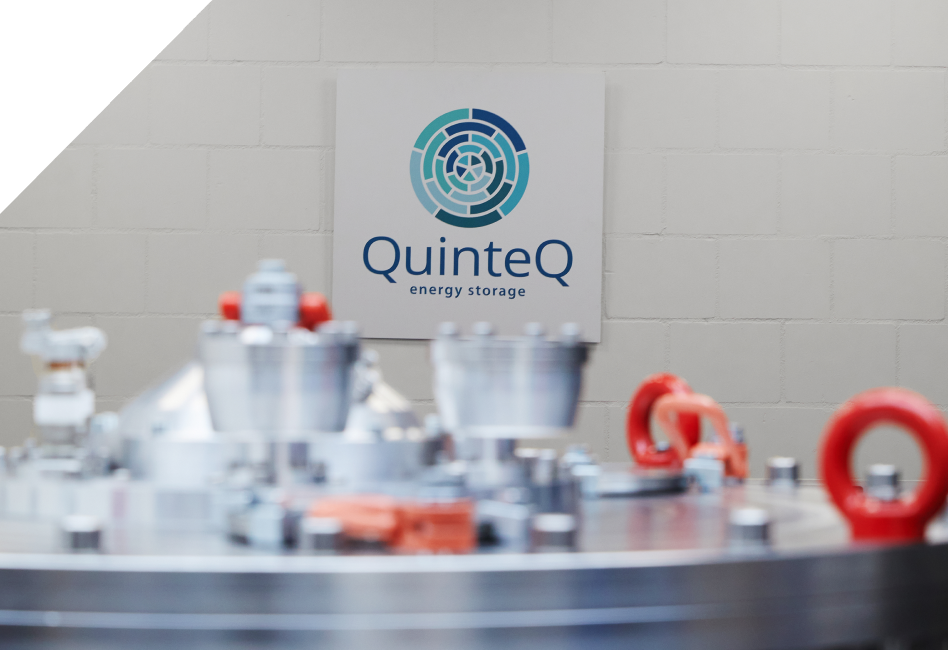Introduction
So far, our blogs have strongly focused on flywheels; after all, they are our flagship product. But flywheels aren’t the only energy storage solution. From lithium-ion to flow batteries to the “new kid on the block” sodium-ion, other technologies play key roles in building a more sustainable, reliable, and efficient grid, sometimes competing with—and often complementing—flywheels. This article will outline those technologies, explain their use cases, and see how they can work alongside flywheels to solve today’s grid.
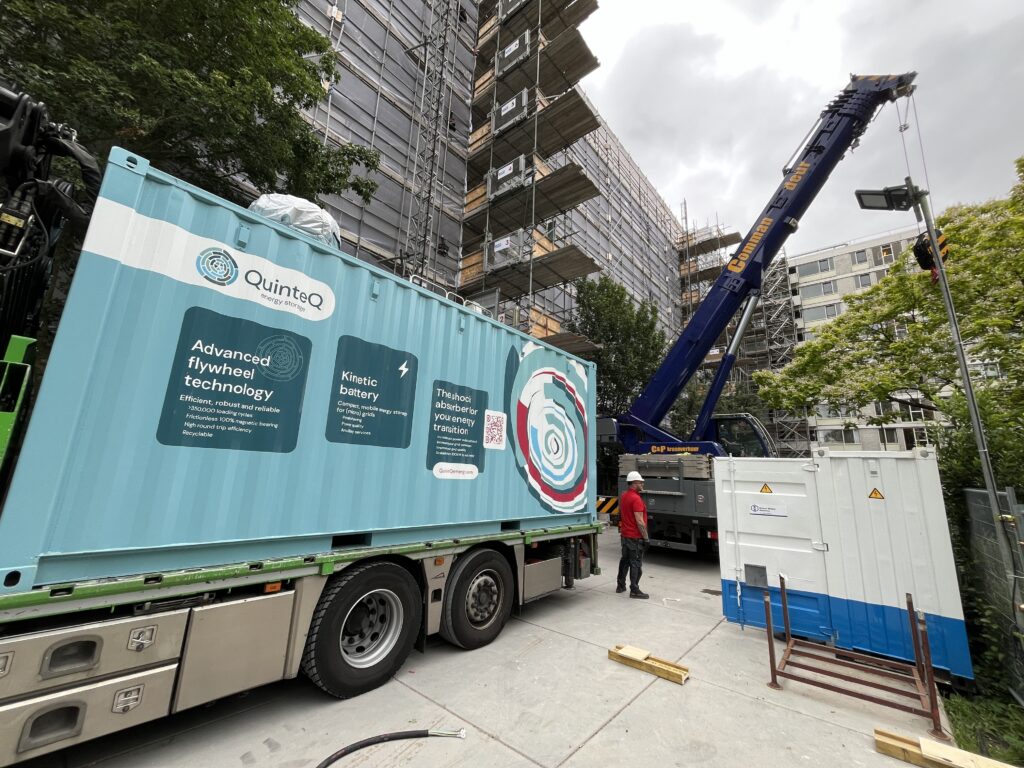
Chemical batteries: A crash course
What is a chemical battery? These are batteries that use chemical reactions to both store and convert chemical energy into electrical energy. They consist of three main components: two electrodes (an anode and a cathode) and an electrolyte. During discharge, ions flow from the anode to the cathode through the electrolyte, releasing energy; when recharging, this process is reversed. An important distinction between these chemical batteries is which kind of ions they use for this reaction. And while there are many different types of chemical batteries out there, the three main ones we’re highlighting in this blog are specifically classified as cell-based chemical batteries.
Lithium-ion batteries
A rechargeable battery that uses lithium ions as its charge carrier. One of the most impactful technologies in recent history, Li-ion batteries are used in cases ranging from portable devices to electric cars to energy grids. There are many types of Li-ion batteries depending on what the lithium is combined with, each with its own properties and uses. Many personal electronics use lithium polymer batteries due to their high specific energy with low masses, essential to portability. Similarly, lithium cobalt oxide batteries are widely used in portable devices, although popularity is waning due to the environmental consequences of lithium and cobalt mining. Lithium iron phosphate batteries are cheap and safe with low toxicity levels and long cycle lives, making them useful in vehicles and emergency back-up power systems.
Sodium-ion batteries
A rechargeable battery that uses sodium ions as its charge carrier; generally the construction and working of it is similar to the lithium-ion battery, only with sodium instead of lithium. Sodium is more abundant and less toxic than lithium, and works with iron-based materials instead of relying on scarcer metals like cobalt or nickel that are needed in Li-ion batteries. Sodium-ion batteries offer a promising alternative to lithium-ion thanks to their use of abundant, low-cost materials. While still in early stages, QuinteQ is developing commercial sodium-ion solutions for stationary, containerized applications.
Flow batteries
The main difference between conventional and flow batteries is that the former stores energy in solid electrodes, while the latter stores energy in liquid electrolytes. The battery functions by having two tanks with two liquids (an anolyte and a catholyte) pumped through a system containing two electrodes separated from each other by a thin membrane. As the electrolytes pass by their respective electrodes, they either gain or release electrons, thus either charging or discharging the battery. The thin membrane allows for ions to be transferred, completing the reaction without the electrolytes meeting and potentially reacting. Flow batteries could be useful in energy grid storage due to its potential long lifespan, though it can suffer from degradation due to electrolyte crossover from the thin membrane. A key benefit is that, due to having the tanks and the electrodes separate, the battery’s energy capacity and power can be individually adjusted, tailoring it to a user’s specific needs.
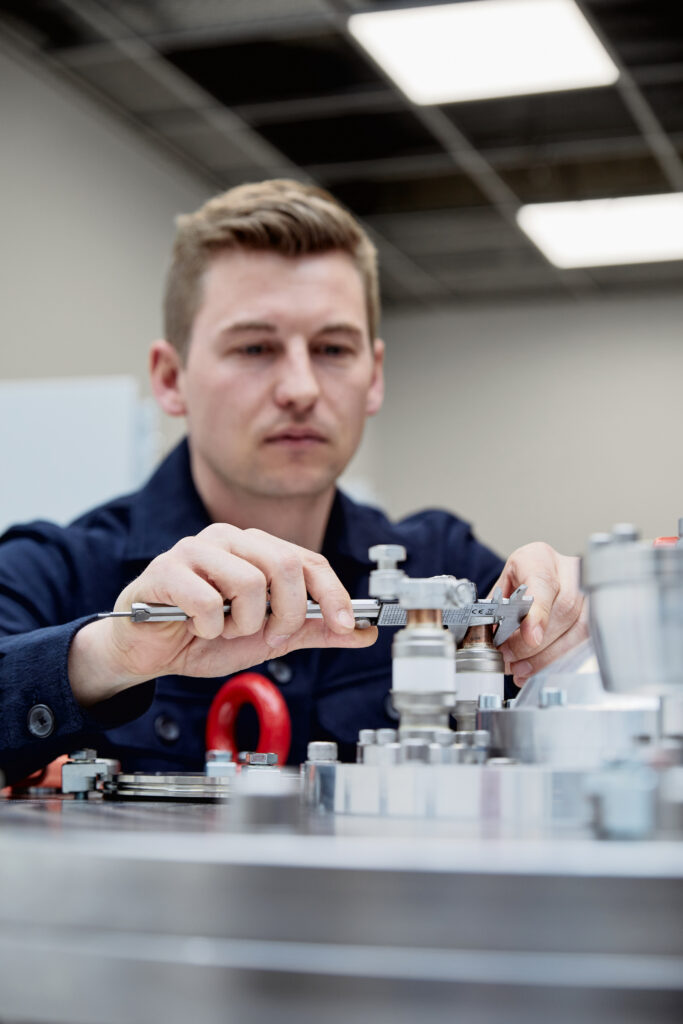
And flywheels?
The flywheel is a mechanical energy storage solution that stores energy in the form of rotational motion, called kinetic energy. Essentially, it’s a wheel spinning rapidly in a vacuum, speeding up when energy is stored and slowing down when energy is delivered. While chemical batteries are crucial for mobile applications and energy-dense storage, flywheels shine in situations requiring frequent cycling, high power peaks, and long lifetimes. These include construction sites, port terminals, railways, and even for military needs; anywhere that has quick-burst high-power demands. For example, flywheels can handle the immediate, short bursts of power needed to shave power peaks in a construction site, such as when a construction crane operates. Flywheels are also capable of carrying out 100 cycles per day, something conventional batteries can only dream of.
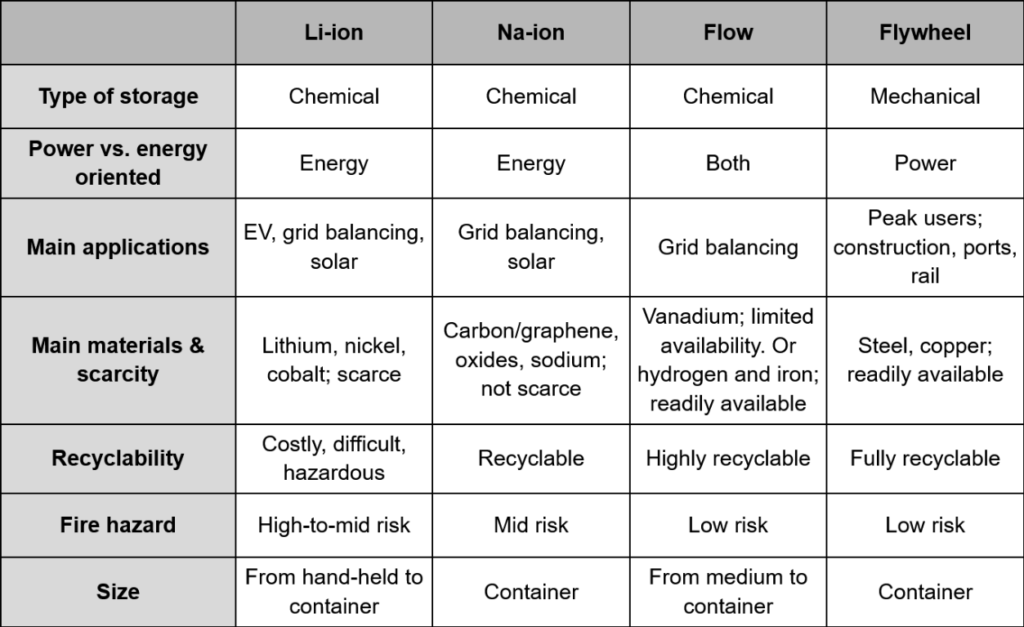
Conclusion
There’s no one-size-fits-all solution in energy storage, and each technology serves its own role. Lithium-ion batteries are ideal for compact, energy-dense needs like EVs and portable electronics. If you’re looking for stationary energy storage with lower environmental impact and cost, choose sodium-ion, a technology which is currently gaining ground. Flow batteries offer a sustainable, safer, and more accessible option for grid-scale systems with high flexibility, although they can be expensive and require large installations.
But when fast response, long lifespans, and power peak shaving are your main concerns, that’s where flywheels step in. At QuinteQ, we’ve engineered a flywheel system built for today’s grid challenges, such as congestion, limited connections, and the electrification of power-heavy industries. It’s a solution driven by purpose, designed specifically for peak shaving.
We’re also building the future of hybrid energy storage. Alongside the flywheel, QuinteQ is also developing a sodium-ion solution to be paired with our flywheels in a containerised multi-purpose combination: a sophisticated solution to the more complex energy challenges. Whether it’s a construction site, port terminal, or industrial zone, we offer you the space and stability to go electric.
We envision a future where both chemical and mechanical storage solutions play a pivotal role in the energy transition. By manufacturing our own systems, QuinteQ is empowering the energy transition, one spin at a time.

Have any questions about how our flywheels work? Send us an email at info@quinteqenergy.com, send us a message through our LinkedIn, or check out our technology page.

